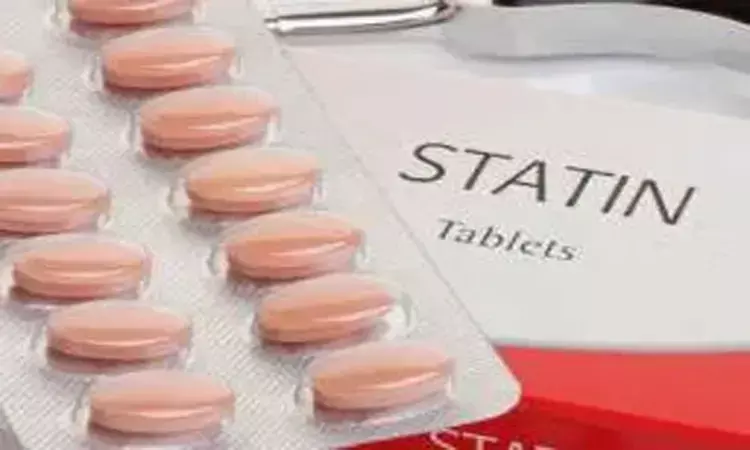- Home
- Medical news & Guidelines
- Anesthesiology
- Cardiology and CTVS
- Critical Care
- Dentistry
- Dermatology
- Diabetes and Endocrinology
- ENT
- Gastroenterology
- Medicine
- Nephrology
- Neurology
- Obstretics-Gynaecology
- Oncology
- Ophthalmology
- Orthopaedics
- Pediatrics-Neonatology
- Psychiatry
- Pulmonology
- Radiology
- Surgery
- Urology
- Laboratory Medicine
- Diet
- Nursing
- Paramedical
- Physiotherapy
- Health news
- Fact Check
- Bone Health Fact Check
- Brain Health Fact Check
- Cancer Related Fact Check
- Child Care Fact Check
- Dental and oral health fact check
- Diabetes and metabolic health fact check
- Diet and Nutrition Fact Check
- Eye and ENT Care Fact Check
- Fitness fact check
- Gut health fact check
- Heart health fact check
- Kidney health fact check
- Medical education fact check
- Men's health fact check
- Respiratory fact check
- Skin and hair care fact check
- Vaccine and Immunization fact check
- Women's health fact check
- AYUSH
- State News
- Andaman and Nicobar Islands
- Andhra Pradesh
- Arunachal Pradesh
- Assam
- Bihar
- Chandigarh
- Chattisgarh
- Dadra and Nagar Haveli
- Daman and Diu
- Delhi
- Goa
- Gujarat
- Haryana
- Himachal Pradesh
- Jammu & Kashmir
- Jharkhand
- Karnataka
- Kerala
- Ladakh
- Lakshadweep
- Madhya Pradesh
- Maharashtra
- Manipur
- Meghalaya
- Mizoram
- Nagaland
- Odisha
- Puducherry
- Punjab
- Rajasthan
- Sikkim
- Tamil Nadu
- Telangana
- Tripura
- Uttar Pradesh
- Uttrakhand
- West Bengal
- Medical Education
- Industry
USPSTF sticks to existing relatively higher risk threshold for statin initiation for primary prevention

USA: The US Preventive Services Task Force (USPSTF) in its recently released recommendation statement has stated that the current evidence is not sufficient to assess the balance of benefits and harms of statin initiation for the primary prevention of CVD events and mortality in adults 76 years or older. Cardiologists working in this space will find that the new document is not much changed from the last USPSTF statin advice in 2016 and USPSTF has stuck to existing relatively higher risk threshold for statin initiation for primary prevention.
The recommendation statement on statin use for the primary prevention of cardiovascular disease in adults, published in the Journal of the American Medical Association (JAMA), is an update to the 2016 recommendation. For developing the recommendation, the USPSTF commissioned a review of the evidence on the benefits and harms of statins for reducing CVD-related morbidity or mortality or all-cause mortality. The recommendation included adults 40 years or older without a history of known CVD and who do not have signs and symptoms of CVD.
The following are the recommendations:
- The USPSTF recommends that clinicians prescribe a statin for the primary prevention of CVD for adults aged 40 to 75 years who have 1 or more CVD risk factors (ie, dyslipidemia, diabetes, hypertension, or smoking) and an estimated 10-year CVD risk of 10% or greater.
- (B recommendation) The USPSTF recommends that clinicians selectively offer a statin for the primary prevention of CVD for adults aged 40 to 75 years who have 1 or more of these CVD risk factors and an estimated 10-year CVD risk of 7.5% to less than 10%. The likelihood of benefit is smaller in this group than in persons with a 10-year risk of 10% or greater.
- (C recommendation) The USPSTF concludes that the current evidence is insufficient to assess the balance of benefits and harms of initiating a statin for the primary prevention of CVD events and mortality in adults 76 years or older. (I statement)
The latest update takes away language about the preferred low-to-moderate dosing of statins in people with no history of CVD. This could be due to a lack of data, as a review of the literature showed most statin trials tested a moderate-intensity statin.
Carol Mangione, David Geffen School of Medicine at UCLA, and colleagues urge the need for future trials that directly compare the higher-versus-lower-intensity statin therapy and are powered to assess clinical outcomes.
The new guidelines are also notable for the 7.5% PCE threshold for statin initiation -- a slightly more conservative choice compared with the 5% risk cutoff for shared decision-making on statins as endorsed by the 2018 American Heart Association/American College of Cardiology guideline.
To sum up, the USPSTF continues to broadly recommend statins for primary prevention while differing from other American guidelines in certain key aspects.
Reference:
US Preventive Services Task Force. Statin Use for the Primary Prevention of Cardiovascular Disease in Adults: US Preventive Services Task Force Recommendation Statement. JAMA. 2022;328(8):746–753. doi:10.1001/jama.2022.13044
Dr Kamal Kant Kohli-MBBS, DTCD- a chest specialist with more than 30 years of practice and a flair for writing clinical articles, Dr Kamal Kant Kohli joined Medical Dialogues as a Chief Editor of Medical News. Besides writing articles, as an editor, he proofreads and verifies all the medical content published on Medical Dialogues including those coming from journals, studies,medical conferences,guidelines etc. Email: drkohli@medicaldialogues.in. Contact no. 011-43720751


